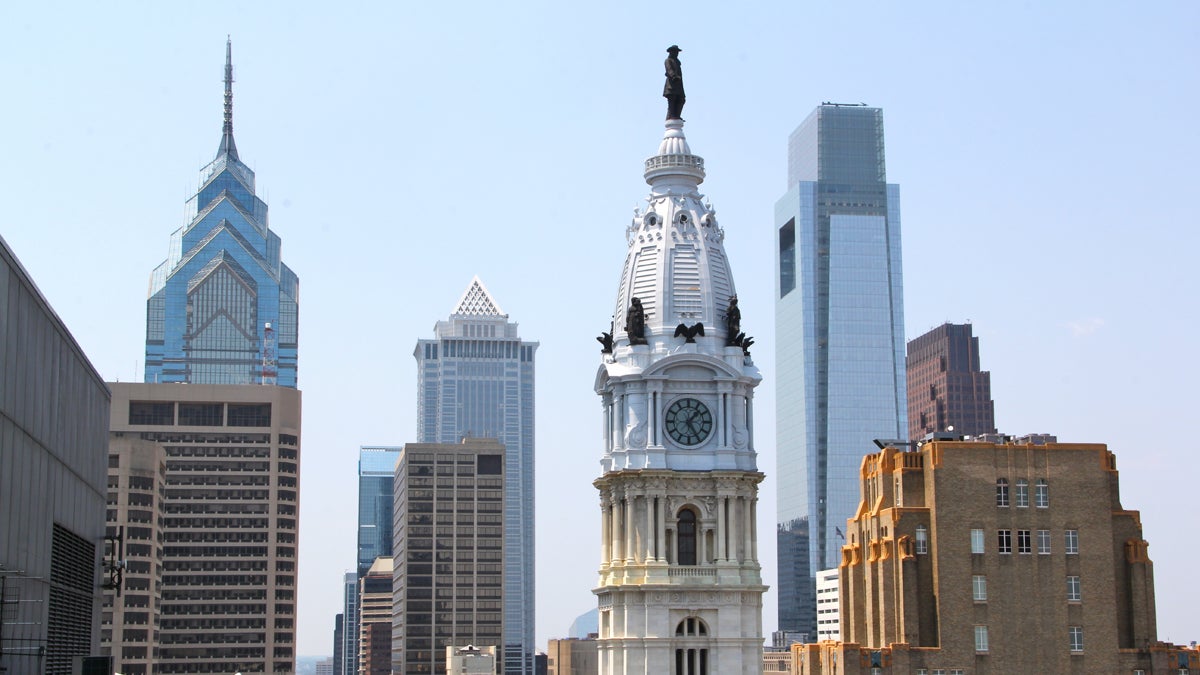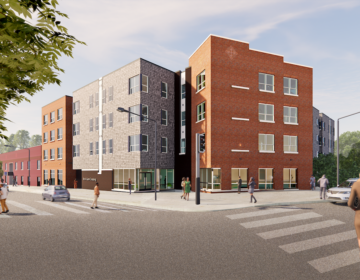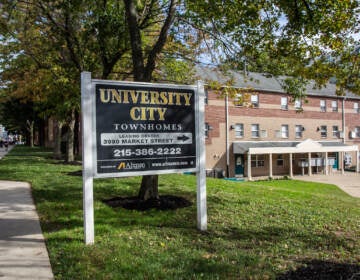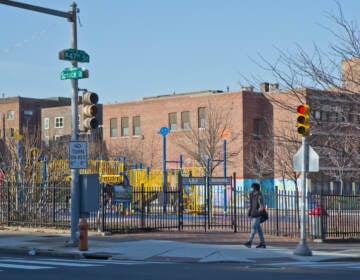Philly Fed: Homeowners in gentrifying neighborhoods suffer tax delinquency but not displacement
Through the study, the two researchers sought to untangle the impacts of wealthier people moving into less affluent neighborhoods.
Listen 4:14
Philadelphia skyline (Emma Lee/WHYY)
With gentrification comes an increased risk of delinquency on homeowners’ tax bills, but in Philadelphia, the phenomenon hasn’t resulted in a significant increase in displacement of owners, not even among those who are elderly or financially disadvantaged, according to a new study by the Federal Reserve Bank of Philadelphia.
“There is no sign so far that homeowners in gentrifying neighborhoods are more likely to experience residential displacement, one of the worst consequences that gentrification could generate,” authors Lei Ding and Jackelyn Hwang wrote.
Through the study, the two researchers sought to untangle the impacts of wealthier people moving into less affluent neighborhoods from the impacts of increases in property taxes.
“The majority of existing research on the effects of gentrification suffers from serious identification challenges because gentrification is an ongoing, evolving process that often occurs simultaneously with increases in property taxes,” Ding and Hwang wrote.
That, they said, creates problems for cities seeking to understand how to protect vulnerable homeowners without depriving them of potential wealth-building opportunities as neighborhoods change and home values increase.
Ding and Hwang found their answers through analyzing rates of tax delinquency, homeowner mobility and gentrification before and after city’s sweeping property taxation system overhaul, known as the Actual Value Initiative or AVI, went into effect in 2014.
The study examined only the effects of gentrification on homeowners. Earlier research from Ding and Hwang, published by the Fed in 2016, found that while vulnerable renters in gentrifying areas do not move more often than renters in non-gentrifying areas when they do move, they tend to end up in less desirable neighborhoods.
“Even though we do not find elevated mobility rates among vulnerable residents, the fact that they are more likely to move to economically worse-off neighborhoods provides support for policies to prevent and mitigate residential displacement,” they wrote.
Another study published in 2017 as part of the Fed’s ongoing analysis of gentrification’s impacts on Philadelphia found that low-cost rental units have vanished from gentrifying neighborhoods at nearly five times the rate of non-gentrifying areas. “At the community level, the loss of affordable units contributes to residents being segregated by income and socioeconomic status,” researchers wrote.
The new analysis of displacement and delinquency among homeowners identified three key findings:
- Gentrification increases the risk of delinquency on homeowners’ tax bill by an average of 4.2 percentage points, and neighborhoods that underwent intense gentrification are experiencing the largest increase of about 5.4 percentage points. Except non-payments induced by property assessment appeals, tax delinquencies reflect the risk of being forced to sell their home or ending up in tax foreclosure for homeowners with liquidity constraints.
- There have been no signs of a mass out-migration of elderly or financially disadvantaged homeowners in gentrifying neighborhoods. This is most likely because of the adoption of several gentrification relief programs and fewer transactions due to the depressed demand after the tax reform.
- New construction may also help mitigate the risk of tax delinquencies and displacement
On the third point, the report highlighted three gentrification mitigation programs to keep long-term homeowners from losing their homes: the homestead exemption program, the Longtime Owner Occupants Program (LOOP), and city’s tax abatement policy.
Earlier this month, City Council passed a bill that amends part of LOOP by eliminating the 10-year limit that currently affects participants who make between 80 and 150 percent of the Area Median Income (AMI).
“Philadelphia is unique in its offering of gentrification relief programs, like LOOP, and such programs are quite effective in terms of reducing long-term homeowner’s tax burdens and preventing tax delinquencies,” said Ding in an interview. “However, there is anecdotal evidence that not all eligible homeowners have enrolled in these programs.”
Ding credits the lack of displacement among older and disadvantaged homeowners in gentrifying areas “to the programs that sheltered them from rising taxes.”
“By raising general awareness of these unique gentrification relief programs and increasing take-up rates, practitioners can help mitigate negative outcomes caused by gentrification,” the Fed researcher said.
Still, the study ends with a call for more analysis. “More studies… are still needed to track whether the higher tax delinquency rates in gentrifying neighborhoods will force more disadvantaged homeowners to move out in the long term,” Ding and Hwang concluded.
The study also notes that “the share of properties receiving other exemptions or abatements was much higher in gentrifying neighborhoods than in non-gentrifying neighborhoods (22.7 percent in gentrifying versus 6.3 percent in non-gentrifying).” These findings are consistent with a new policy report released last Friday by the Office of the City Controller, which found that ten neighborhoods concentrated around Center City make up 59 percent of the properties receiving Philadelphia’s controversial 10-year tax abatement.
WHYY is your source for fact-based, in-depth journalism and information. As a nonprofit organization, we rely on financial support from readers like you. Please give today.







